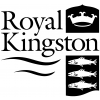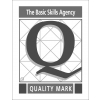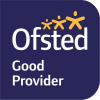Writing 
If you walked into a writing lesson at King Athelstan you would see children eager to write, as we give every writing task a purpose: whether that be writing a letter to someone in the community, creating a missing poster for a character they are reading about or making a story for the book corner. Children enjoy writing if there is a reason – and we have planned our writing curriculum with this in mind.
As well as this, you would see teachers hooking children into their learning by sharing videos, taking trips, finding weird and wonderful objects and creating ‘crime scenes’ with caution tape, to ignite children’s imagination and give them a context for writing. Teachers mark in green pen and help children identify ways to improve - pupils use 'purple polishing pens' to correct marvellous mistakes and to edit their work.



Click here to see our:
English Curriculum - Reading and Writing
Writing Skills Progression
Handwriting 
The teaching of handwriting starts with mark making in Nursery and is then inextricably linked with the teaching of RWI phonics in Reception and KS1.
Each letter has a handwriting phrase linked to it to support with letter formation:


At King Athelstan we use phrases like ‘Birdy Fingers’ to remind the children of their ‘Tripod Grip’, which means they initiate their pencil grip with the shape of a birds beak:

We also use ‘letter families’ to teach children how to form each letter correctly.

Click here to see our:
Non cursive letter families - Reception
Cursive letter families - Y1 - Y6
Handwriting and Phonic Phrases
Handwriting Targets
Once children are confident with their pencil grip we set them personalised handwriting targets. Once they have achieved their gold award they are presented with a 'pen licence' which means they can move from writing in pencil to writing in blue pen. In KS2 when their handwriting is immaculate, they can try for their 'diamond award' and move on to a fountain pen, which is called an advanced pen licence!

Click here to see our:
Handwriting Targets and Pen Licence Criteria
Example of pen licence standard:


Grammar, Spelling and Vocabulary
Grammar and spelling are fundamental to the teaching of writing and this is taught through daily modelled writing, specific marking, feedback and targeted lessons to teach new skills.
To become confident and articulate readers and writers, children need to learn new vocabulary to enhance their writing to engage the reader and learn new words to understand what they are reading. We use drama and role play to support children’s language development alongside complex vocabulary word banks to extend children’s previous knowledge.
Parents and Carers can help with language development at home by chatting about their day, talking about the environment when they are out and about and reading stories to their children.
‘Children who read plenty of memorable stories avidly and repetitively, or are read a regular ‘bedtime story’, will implicitly internalise language patterns. Many of these children have the skill to draw on this resource for their own writing. Traditional tales are significant because they loiter in the mind powerfully due to their rhythmic, repetitive language but also because of their powerful images – wolves and trolls tend to hang around!’ - Pie Corbett
See spelling PDFs below:
Spellings to practise for each year group:
- Year 1 Spellings (Adobe Acrobat PDF file / 103 KB)
- Year 2 Spellings (Adobe Acrobat PDF file / 136 KB)
- Year 3 and 4 Spellings (Adobe Acrobat PDF file / 278 KB)
- Year 5 and 6 Spellings (Adobe Acrobat PDF file / 241 KB)




